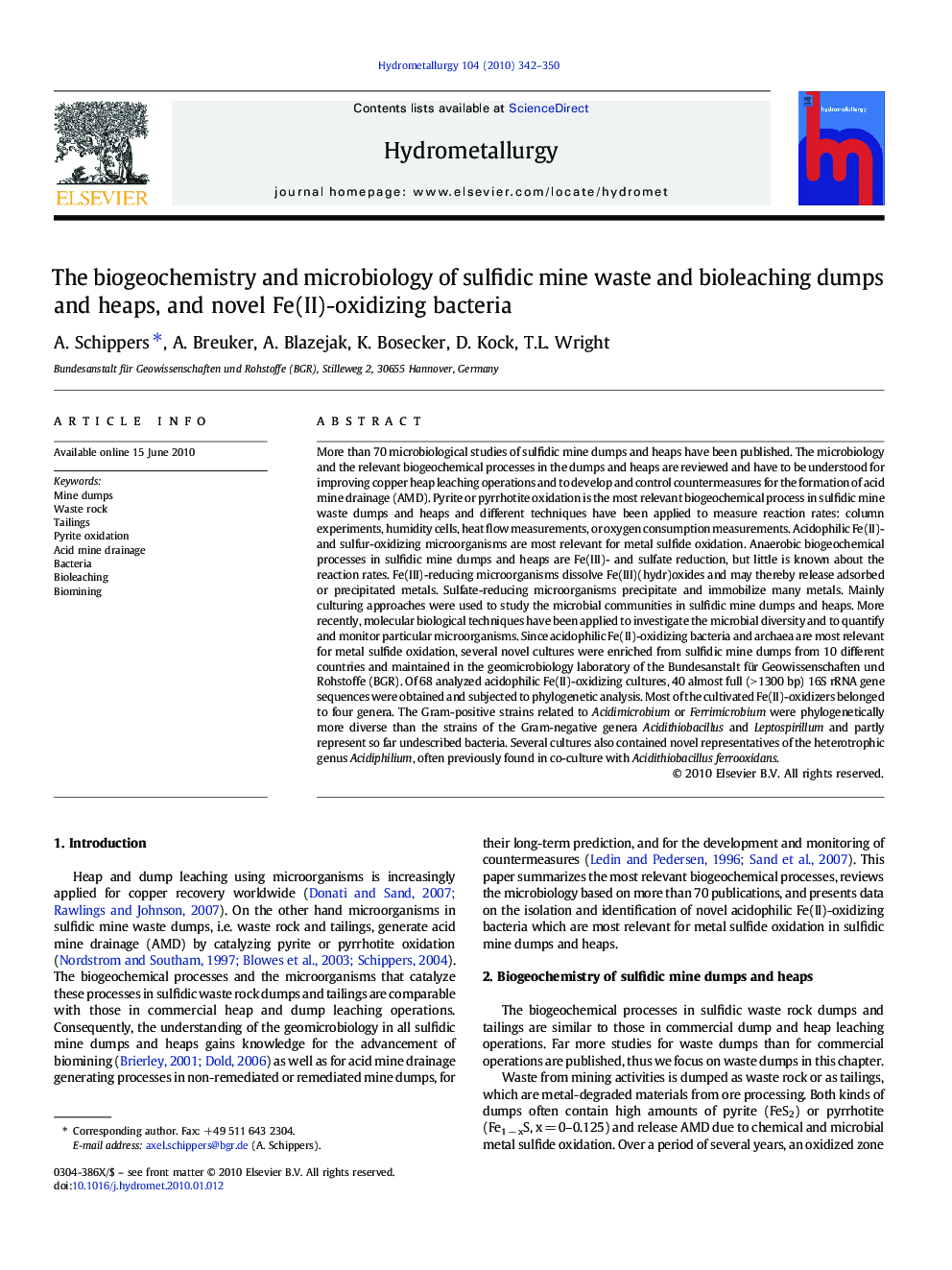| کد مقاله | کد نشریه | سال انتشار | مقاله انگلیسی | نسخه تمام متن |
|---|---|---|---|---|
| 212892 | 462072 | 2010 | 9 صفحه PDF | دانلود رایگان |

More than 70 microbiological studies of sulfidic mine dumps and heaps have been published. The microbiology and the relevant biogeochemical processes in the dumps and heaps are reviewed and have to be understood for improving copper heap leaching operations and to develop and control countermeasures for the formation of acid mine drainage (AMD). Pyrite or pyrrhotite oxidation is the most relevant biogeochemical process in sulfidic mine waste dumps and heaps and different techniques have been applied to measure reaction rates: column experiments, humidity cells, heat flow measurements, or oxygen consumption measurements. Acidophilic Fe(II)- and sulfur-oxidizing microorganisms are most relevant for metal sulfide oxidation. Anaerobic biogeochemical processes in sulfidic mine dumps and heaps are Fe(III)- and sulfate reduction, but little is known about the reaction rates. Fe(III)-reducing microorganisms dissolve Fe(III)(hydr)oxides and may thereby release adsorbed or precipitated metals. Sulfate-reducing microorganisms precipitate and immobilize many metals. Mainly culturing approaches were used to study the microbial communities in sulfidic mine dumps and heaps. More recently, molecular biological techniques have been applied to investigate the microbial diversity and to quantify and monitor particular microorganisms. Since acidophilic Fe(II)-oxidizing bacteria and archaea are most relevant for metal sulfide oxidation, several novel cultures were enriched from sulfidic mine dumps from 10 different countries and maintained in the geomicrobiology laboratory of the Bundesanstalt für Geowissenschaften und Rohstoffe (BGR). Of 68 analyzed acidophilic Fe(II)-oxidizing cultures, 40 almost full (> 1300 bp) 16S rRNA gene sequences were obtained and subjected to phylogenetic analysis. Most of the cultivated Fe(II)-oxidizers belonged to four genera. The Gram-positive strains related to Acidimicrobium or Ferrimicrobium were phylogenetically more diverse than the strains of the Gram-negative genera Acidithiobacillus and Leptospirillum and partly represent so far undescribed bacteria. Several cultures also contained novel representatives of the heterotrophic genus Acidiphilium, often previously found in co-culture with Acidithiobacillus ferrooxidans.
Journal: Hydrometallurgy - Volume 104, Issues 3–4, October 2010, Pages 342–350